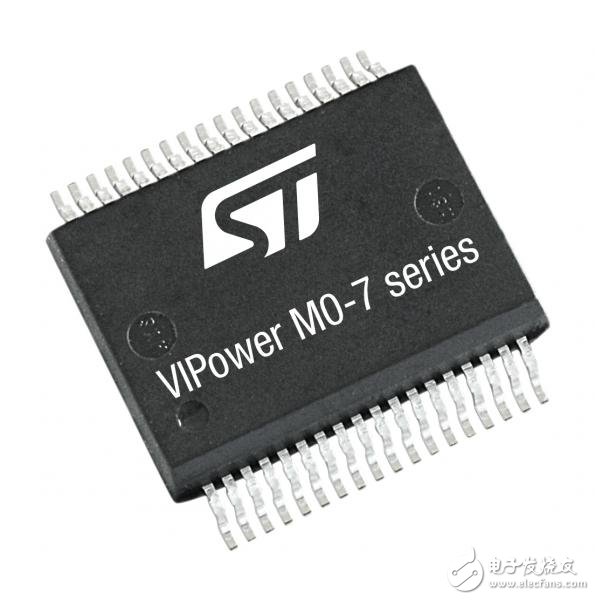ST launched a new generation of advanced switch ICs for automotive electronic systems such as car lights and body modules. The new device provides customers with enhanced intelligent functions, protection functions and reliability, and the size is reduced by 40% compared with competitive products.
The upper-arm intelligent switch was developed by STMicroelectronics, and its reliability and energy efficiency are superior to ordinary traditional relays. Among ST's VIPower series products, there are many products that use the same package design for successive generations. This method allows major auto parts manufacturers to develop different types of electronic modules through the same basic software and hardware. It meets different technical requirements on the market and provides different vehicle specifications and optional configurations in a cost-effective manner. The general packaging approach has been widely adopted by upper-arm switch manufacturers.
The M0-7 series released this time is ST's seventh-generation VIPower series. 75% of the products are in a 5 x 4mm package, and the size is 40% smaller than the smallest competitor. This allows electronic designers to save printing Circuit board space, design smaller modules. In addition, a number of improvements have been made to the internal design of the product to improve precision and diagnostic feedback performance and reliability. Specifically, improved performance includes stronger short-circuit protection, more accurate voltage and temperature feedback, higher current sensing accuracy, and the best electromagnetic radiation (EMI) performance of its kind.
All products are now available. The dual-channel VND7020AJ-E will be put into mass production in the second quarter of 2013. The new series of packages include PowerSSO-16, PowerSSO-36, Octapak and SO-8.
Main features of M0-7 series:
Accurate load current, voltage and temperature monitoring feedback integrated detection multiplexer power limit and over-temperature shutdown protection bulb / LED mode (four-channel) Flexible fault reset management polarity reverse protection complete on-off state diagnosis Low quiescent current
Background of the switch on the upper arm of the car
The upper-arm intelligent switch plays an important role in the development of advanced automotive electronic systems. The upper arm switch integrates the power MOSFET, logic circuit, control circuit and detection circuit in a package, in which the power MOSFET assumes the role of electronically controlling the main switch. The switch is connected between the microcontroller and loads such as light bulbs, motors, heaters, or valves, allowing the microcontroller to control the load based on input, such as dashboard switches or sensors, and information sent by smart circuits in the upper arm switches. The sensors may be ambient light sensors, raindrop sensors, driver seat temperature sensors, wheel speed sensors, or other types of sensors, depending on the type of subsystem.
By integrating sensing, control and logic circuits, the high-side intelligent switch can reliably handle various types of loads, such as high-inductive loads such as motors or resistive loads such as electric heaters. In addition, these intelligent function switches can perform many functions without the intervention of a microcontroller, thereby simplifying software design and improving the efficiency of the use of processor resources. Built-in protection functions, such as overvoltage protection, overheat protection, open circuit or short circuit protection, can prevent damage to subsystems, modules or wires, and can restart the switch under safe conditions.
Because it is specially designed to work on the upper arm side of the load directly connected to the battery, the upper arm switch can allow the negative terminal of the load to be directly connected to the car chassis, which can reduce the number of wires and connectors, which greatly reduces the cost and the car. Self-respect.

Cold Forging is a forming process below the recrystallizing temperature of the material, and it is forged below the recovery temperature. It is customary to call the forging of unheated blank cold forging in production. Most of the cold forging materials are aluminum and some alloys, copper and some alloys, low carbon steel, medium carbon steel and low alloy structural steel with low deformation resistance and good plasticity at room temperature. Cold forgings have good surface quality and high dimensional accuracy, and can replace some cutting. Cold forging can strengthen the metal and improve the strength of the parts.
Round Heat Sink,Cold Forging Process,Aluminum Fin Heatsink,Aluminum Round Heat Sink
Dongguan Formal Precision Metal Parts Co,. Ltd , https://www.formalmetal.com